Discover 10 hidden attractions, cool sights, and unusual things to do in Demopolis (United States). Don't miss out on these must-see attractions: Bluff Hall, Gaineswood, and Demopolis Town Square. Also, be sure to include Glover Mausoleum in your itinerary.
Below, you can find the list of the most amazing places you should visit in Demopolis (Alabama).
Table of Contents
Bluff Hall
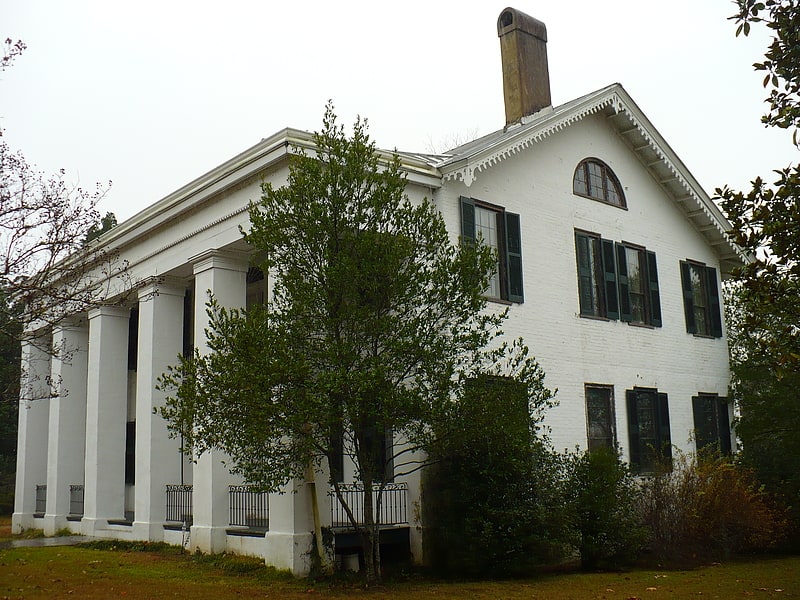
Museum in Demopolis, Alabama. Bluff Hall is a historic residence in Demopolis, Alabama, United States. The original portion of the house is in the Federal style with later additions that altered it to the Greek Revival style. It was documented as part of the Historic American Buildings Survey in 1936, and added to the National Register of Historic Places in 1970. It serves as a historic house museum, with the interior restored to an 1850s appearance.[1]
Address: 407 N Commissioners Ave, 36732-1909 Demopolis
Gaineswood
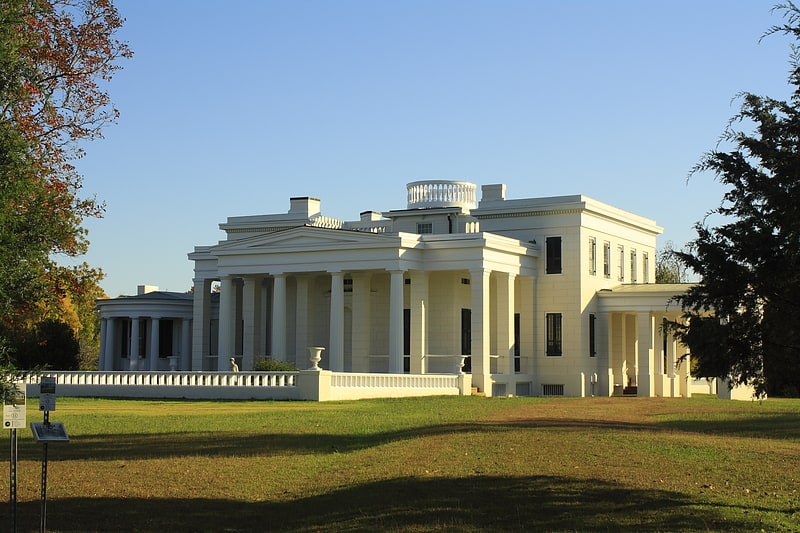
Museum in Demopolis, Alabama. Gaineswood is a plantation house in Demopolis, Alabama, United States. It is the grandest plantation house ever built in Marengo County and is one of the most significant remaining examples of Greek Revival architecture in Alabama.
The house was built with the profits of forced labor, and much of the actual construction was performed by enslaved people. It was completed on the eve of the American Civil War after a construction period of almost 20 years.
The house and grounds are currently operated by the Alabama Historical Commission as a historic house museum.[2]
Address: 805 S Cedar Ave, 36732-2915 Demopolis
Demopolis Town Square
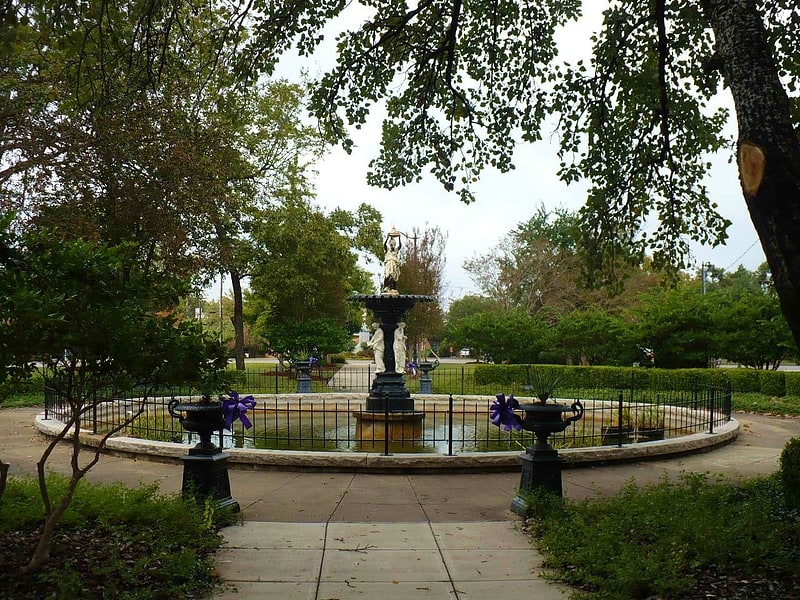
Park in Demopolis, Alabama. Demopolis Town Square, currently officially known as Confederate Park, is a historic park in the city of Demopolis, Alabama, United States. It is one of the oldest public squares in the state. Demopolis had its beginnings in 1817 with the Vine and Olive Colony, and the park was established in 1819. The park covers one city block, bounded by Main, Capitol, Walnut, and Washington Streets.
The park was renamed "Confederate Park" in 1923, at request of United Daughters of the Confederacy.
The park contains several historic structures, including a Victorian-era gazebo near the corner of Walnut Avenue and Washington Street, the Demopolis City Hall, built in 1869–70 as a courthouse annex, and the old Presbyterian Church, built in 1843 and now known as Rooster Hall. The former church served as the Marengo County Courthouse from 1868 until 1871, when the county seat was temporarily moved from Linden. The park's center features a large cast iron fountain that was installed in 1895. The park is often used for the city's festivals, most notably for many of the Christmas on the River events. The park was added to the National Register of Historic Places on 29 November 1975.[3]
Glover Mausoleum

Mausoleum in Demopolis, Alabama. The Glover Mausoleum, also known as the Glover Vault, is a Greek Revival mausoleum located within the Riverside Cemetery in Demopolis, Marengo County, Alabama. It houses the remains of local plantation owner, Allen Glover, his first wife and second wife, along with many of their descendants.[4]
Lyon Hall

Mansion in Demopolis, Alabama. Lyon Hall, also known as the Lyon-Lamar House, is a historic Greek Revival mansion in Demopolis, Alabama, United States. It was built over a period of three years by George Gaines Lyon and his wife, Anne Glover Lyon. Lyon was an attorney and the nephew of Francis Strother Lyon, who maintained a residence nearby at Bluff Hall.[5]
United States Post Office
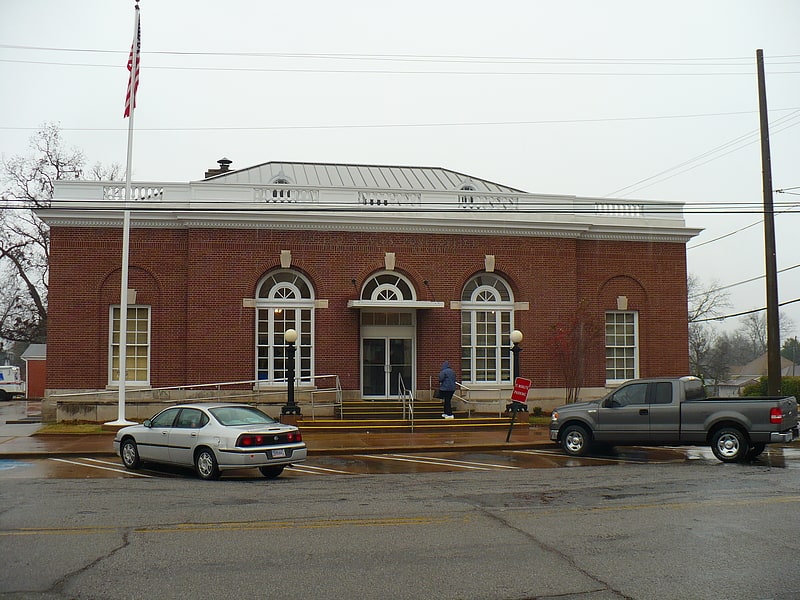
Post office in Demopolis, Alabama. The U.S. Post Office in Demopolis, Alabama is a historic post office. It was built in 1914 in a Jeffersonian Neoclassical style. The facade is granite and brick with five arched bays, the three central bays feature Palladian windows. The roof line is crowned with a vasiform balustrade. The interior is marble. The building was added to the National Register of Historic Places on July 28, 1984, due to its architectural significance.[6]
Foscue–Whitfield House
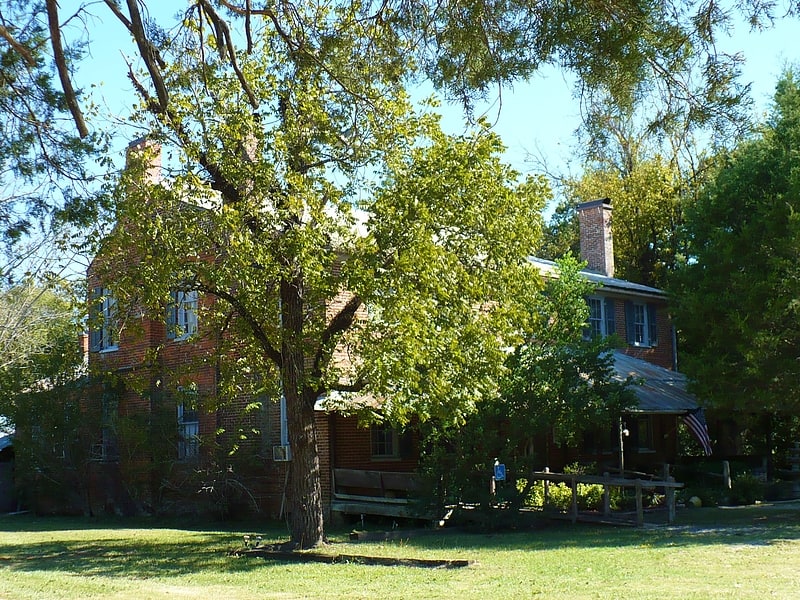
The Foscue–Whitfield House, best known as the Foscue House, is a historic Federal style plantation house just outside the city limits of Demopolis, Alabama, United States.[7]
Address: AL-8, Demopolis, AL 36732, Demopolis
Ashe Cottage

Building in Demopolis, Alabama. Ashe Cottage, also known as the Ely House, is a historic Carpenter Gothic house in Demopolis, Alabama. It was built in 1832 and expanded and remodeled in the Gothic Revival style in 1858 by William Cincinnatus Ashe, a physician from North Carolina. The cottage is a 1+1⁄2-story wood-frame building, the front elevation features two semi-octagonal gabled front bays with a one-story porch inset between them. The gables and porch are trimmed with bargeboards in a design taken from Samuel Sloan's plan for "An Old English Cottage" in his 1852 publication, The Model Architect. The house is one of only about twenty remaining residential examples of Gothic Revival architecture remaining in the state. Other historic Gothic Revival residences in the area include Waldwic in Gallion and Fairhope Plantation in Uniontown. Ashe Cottage was added to the Alabama Register of Landmarks and Heritage on August 22, 1975, and to the National Register of Historic Places on 19 October 1978.
The Ashe House is given as one of four examples of the paired-gable subtype of Gothic Revival houses in A Field Guide to American Houses (1984). It is noted as having "very delicate lace-like porches and vergeboard details." Paired gables appear in about five percent of Gothic Revival houses in America.[8]
Curtis House
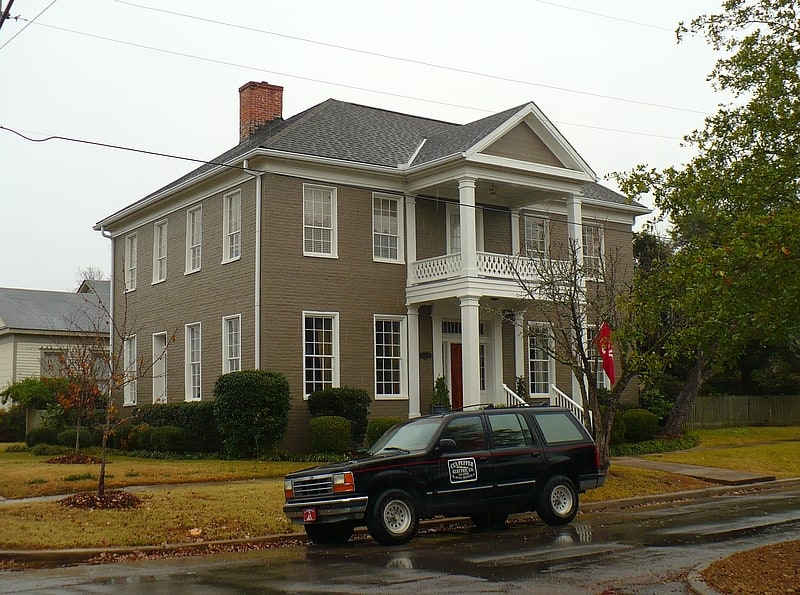
Historical landmark in Demopolis, Alabama. The Curtis House, also known as the Howze-Culpepper House, is a historic house in Demopolis, Alabama, United States. It is a brick structure that was built in 1840 by Samuel Curtis, a Revolutionary War veteran who was born in Queen Anne's County, Maryland in 1751 and died in Marengo County, Alabama in 1846. The house was built in the Federal style, with the later addition of a Greek Revival influenced portico. It was added to the National Register of Historic Places on 11 April 1977.[9]
Demopolis Historic Business District
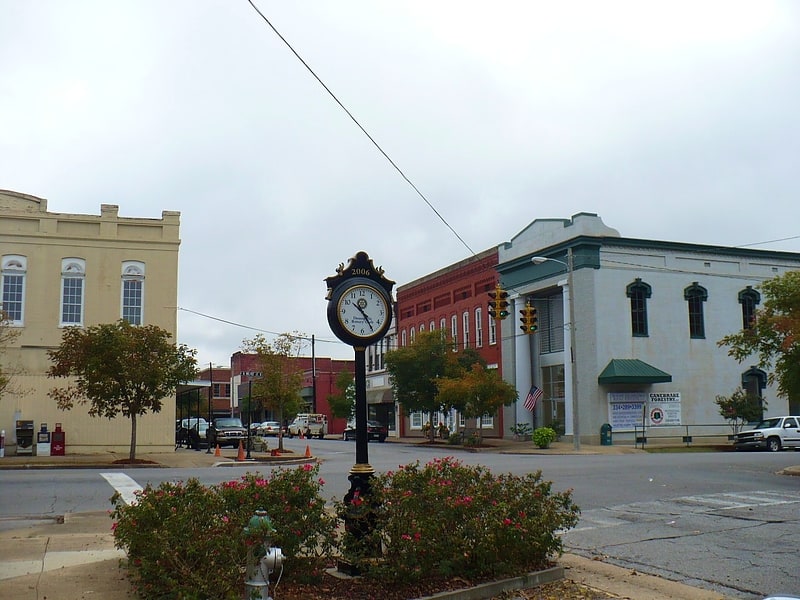
Historical place in Demopolis, Alabama. The Demopolis Historic Business District, currently officially known as Demopolis Historic District, is a historic district in the city of Demopolis, Alabama, United States. Demopolis had its beginnings in 1817 with the Vine and Olive Colony. The historic district is a ten block area, roughly bounded by Capitol Street, Franklin Street, Desnouettes Street, and Cedar Avenue.
The district boundaries were increased, and name was changed to the actual one in October 2014.[10]